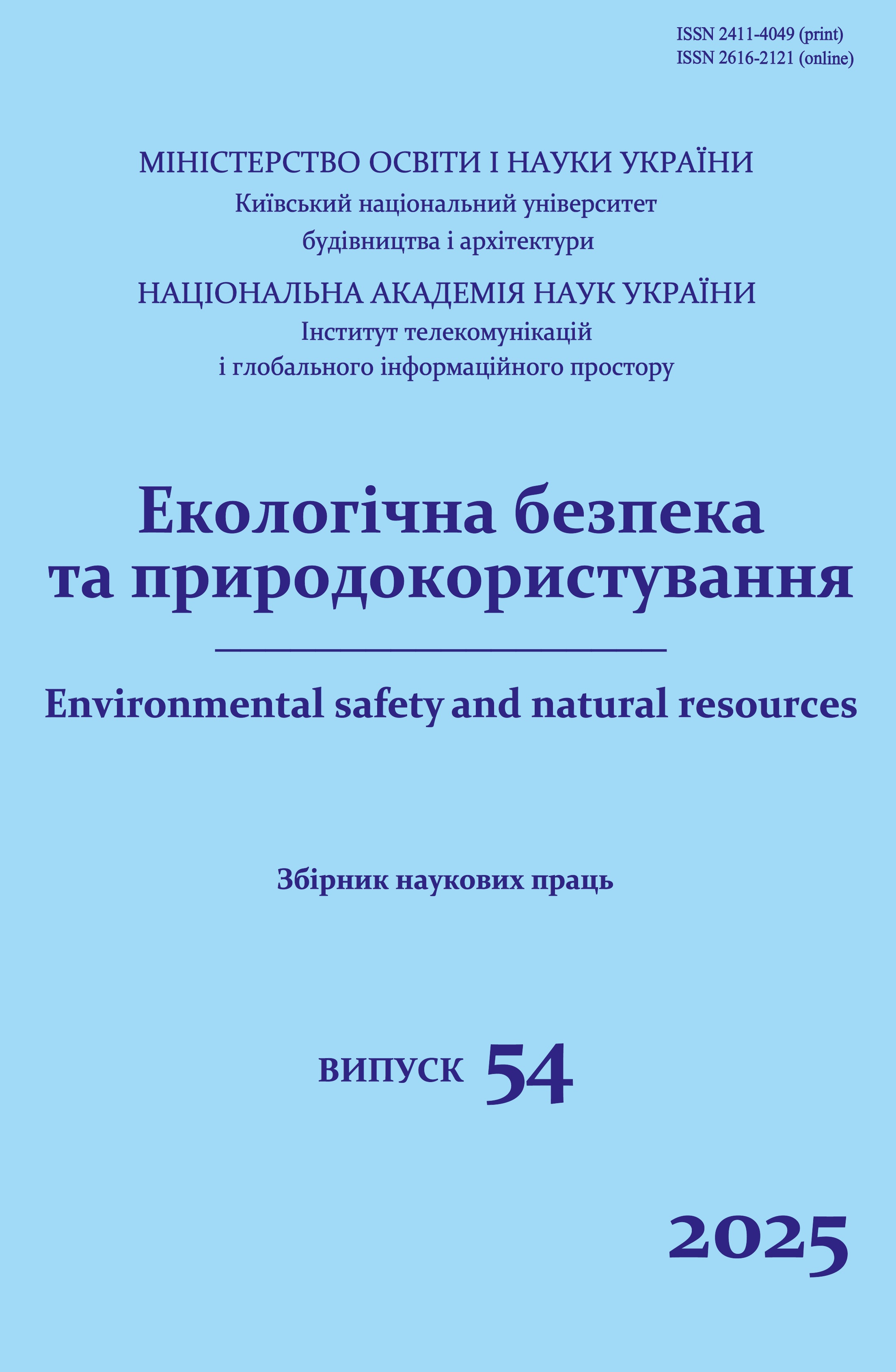Methodology for forecasting the number of disabled people from sanitary losses
DOI:
https://doi.org/10.32347/2411-4049.2025.2.121-135Keywords:
sanitary losses, rehabilitation, pension provision, modeling, Bayesian data analysis, classificationAbstract
The article considers the problems of building mathematical models for predicting the contingent of pension recipients under conditions of uncertainty caused by the impact of hostilities. Based on the study of statistical information on the structure and dynamics of sanitary losses, an approach to revealing systemic uncertainty in the problem of predicting the contingent of pension recipients is proposed. This work is part of the study of the application of methods of intelligent data analysis and mathematical modeling in information technology intended for use in the pension system.
The problem of predicting human losses as a result of hostilities is an urgent problem even in the conditions of the use of high-tech weapons. Sanitary and irretrievable losses are not only the effectiveness of the combat use of the unit, but also the costs of treatment, rehabilitation, pension provision, insurance payments. A high-intensity war with the use of the most modern weapons and military equipment has no analogues in retrospect. Therefore, approaches to predicting combat medical and non-recoverable losses, which are based solely on the calculation of average values or on analogies, cannot provide high-quality results. The study is devoted to the development of a methodology for predictive modeling of medical losses, the basis of which is probabilistic-statistical models in the form of Bayesian networks, the method of time series similarity and cluster analysis. If necessary, the proposed methodology can be used to perform calculations under different scenarios.
During the study, a number of numerical experiments were conducted, in which the correctness of the application of the proposed methodology was investigated. Acceptable forecasting results were obtained.
The proposals presented in the work will allow to increase the sustainability of the pension system of Ukraine, including by more accurately determining the dynamics of the contingent of pension recipients, and, accordingly, the costs of paying pensions.
References
Standart VST 01.305.003-2019 (01) «Metodychne zabezpechennja. Klasyfikacija bojovyh urazhen', nebojovyh travm ta zahvorjuvan' u Zbrojnyh sylah Ukrai'ny» [in Ukrainian].
Fedorchenko-Kutujev, P. V., Kaz’mirova, O. M., & Vol’s’kyj, O. M. (2023). Konflikty, vijny ta social’ni transformacii’ epohy modernu: teorija, istorija, s’ogodennja : materialy XI Mizhnarodnoi’ nauk.-prakt. konf. (Kyiv, 12–13 chervnja 2023 r.). Kyiv: Universytets’ka knyga [in Ukrainian].
Kudryc'kyj, M. O., Pater, N. V., Kostrycja, V. O. (2024). Propozycii' shhodo algorytmu vyznachennja bojovyh vtrat osobovogo skladu z metoju prognozuvannja zminy efektyvnosti bojovogo zastosuvannja ozbrojennja ta vijs'kovoi' tehniky. Vijs'kovo-tehnichnyj zbirnyk, 31, 44-50 [in Ukrainian]. https://doi.org/10.33577/2312-4458.31.2024.44-51
Livins'kyj, V. G. (2020). Sanitarni vtraty jak indykatyvnyj pokaznyk dijal'nosti medychnoi' sluzhby Zbrojnyh Syl Ukrai'ny. Suchasni aspekty vijs'kovoi' medycyny, 27 (2), 62-75 [in Ukrainian]. https://doi.org/10.32751/2310-4910-2020-27-28
Za jakymy pryncypamy oblikovujut' sanitarni vtraty? https://armyinform.com.ua/2020/01/14/za-yakymy-prynczypamy-oblikovuyut-sanitarni-vtraty/
Kochin, I. V. (2019). Analiz zagal'nyh vtrat sered vijs'kovosluzhbovciv i naselennja pry bojovyh dijah i i'h osoblyvosti. Naukovyj ogljad, 5(100), 29-39. https://doi.org/10.22141/2224-0586.5.100.2019.177015
The official site of Watson institute (Brown University). http://watson.brown.edu/
Fursenko, L. K., Chernovol, N. M. (2020). Lanchesterovs'ki modeli bojovyh dij. Zbirnyk naukovyh prac' Harkivs'kogo nacional'nogo universytetu Povitrjanyh Syl, 4(66), 85-91 [in Ukrainian]. https://doi.org/10.30748/zhups.2020.66.12
Urazhajucha dija suchasnoi' zbroi' i harakterystyka sanitarnyh vtrat. https://ppt-online.org/37598 [in Ukrainian].
Official NATO website. http://www.nato.int/
Global Terrorism Database Codebook: inclusion criteria and variables. (2019). USA: University of Maryland. https://www.start.umd.edu/gtd/
Gallagher, M., Sturgeon, S., Finch, B., Villongco, F. (2022). Probabilistic Analysis of Complex Combat Scenarios. Military Operations Research, 27 (1), 87–106. https://www.jstor.org/stable/27116757.
Zgurovs'kyj, M. Z., Bidjuk, P. I., Terent'jev, O. M., Prosjankina-Zharova, T. I. (2015). Bajjesivs'ki merezhi v systemah pidtrymky pryjnjattja rishen': navch. posib. Kyiv: Edel'vejs [in Ukrainian].
Trofymchuk, O., Bidjuk, P., Kozhuhivs'ka, O., Kozhuhivs'kyj, A. (2015). Jmovirnisno-statystychni nevyznachenosti v systemah pidtrymky pryjnjattja rishen'. Visnyk Nacional'nogo universytetu «L'vivs'ka politehnika», 826, 237–248 [in Ukrainian].
Dovgyj, S. O., Bidjuk, P. I., Trofymchuk, O. M. (2014). Systemy pidtrymky pryjnjattja rishen' na osnovi statystychno-jmovirnisnyh metodiv. Kyi'v: Logos [in Ukrainian].
Zgurovs'kyj, M. Z., Pankratova, N. D. (2007). Osnovy systemnogo analizu. K.: Vydavnycha grupa BHV [in Ukrainian].
Sankoff, D., Kruskal, J. (1999). Time warps, string edits, and macromolecules: The theory and practice of sequence comparison. https://web.stanford.edu/group/cslipublications/cslipublications/site/1575862174.shtml
Beyer, W.A., Stein, M.L., Smith, T.F, Ulam, S.M. (1974). A molecular-sequence metric and evolutionary trees. Mathematical Biosciences, 19, 9-25. https://www.sciencedirect.com/science/article/abs/pii/0025556474900285
Wilbur, W.I., Lipman, D.I. (1983). Rapid similarity searches of nucleic acid and protein data banks. Proceeding of the National Academy of Science of the USA, 80, 726-730. https://pubmed.ncbi.nlm.nih.gov/6572363/
Schubert, S., Lee, T. (2011). Time Series Data Mining with SAS® Enterprise Miner. Proceedings of the SAS Global Forum 2011 Conference. SAS Institute Inc., Cary, NC. https://support.sas.com/resources/papers/proceedings11/160-2011.pdf
Leonard, M., Sloan, J., Lee, T., Elsheimer, B. (2007). An Introduction to Similarity Analysis Using SAS. Proceedings of the SAS Global Forum 2007 Conference. SAS Institute Inc., Cary, NC. https://support.sas.com/rnd/app/ets/papers/similarityanalysis.pdf
Downloads
Published
How to Cite
Issue
Section
License
Copyright (c) 2025 Oleksandr Trofymchuk, Roman Koval, Oleksii Zarudnyi

This work is licensed under a Creative Commons Attribution 4.0 International License.
The journal «Environmental safety and natural resources» works under Creative Commons Attribution 4.0 International (CC BY 4.0).
The licensing policy is compatible with the overwhelming majority of open access and archiving policies.

